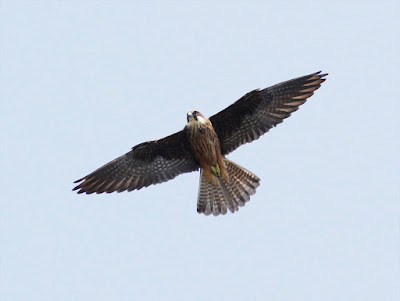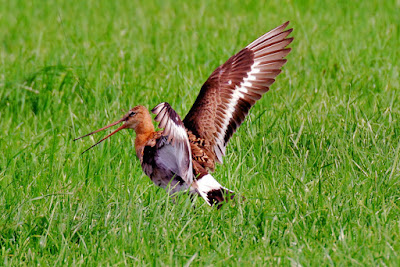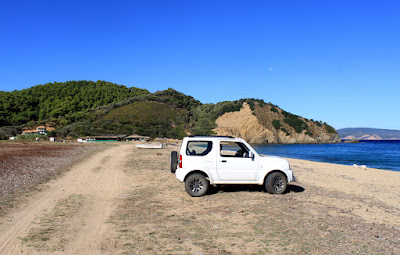A Barn Owl floated across Stalmine Moss but that wasn't the reason to stop. I’d heard a local rarity singing from the same spot where I saw a couple of the creatures in deepest winter. It was a Corn Bunting, that once abundant bird of local farmland but now a very occasional sight.
Corn Bunting
Counts of Corn Buntings are now desperately low. There are hardly any local breeding records and pitifully low numbers in wintertime when we might expect a few to feed on farmland stubble. Therein lies the problem.
Not too many moons ago the Fylde was a summer arable landscape of growing vegetables followed by views of autumn and winter stubble, fields of waste and weed seeds left from the harvest that kept myriads of buntings and finches alive through the winter. Those same fields are now grass and silage for sheep and cows, meat the only food that most people eat since abandoning live vegetables. Big Mac and the like have a lot to answer for.
I read an article recently that suggested cooking skills may die out completely in the next two generations because we Brits are losing interest. Although we declare ourselves too busy to cook from scratch, opting instead for takeaways and factory food, we have plenty of time to watch TV. The national obsession with cookery shows and watching other people prepare food on TV does not prompt us to actually cook anything other than microwaved ready meals or beans on toast. A home-made steak and kidney pie is now as rare as hens-teeth in Kentucky Fried Britain.
I digress. Back to the birds. There was a scratchy singing Whitethroat too, one of 8/10 seen this morning; so at last they have arrived. Likewise a few more Swallows scattered around farms, 30+ in total but still very few House Martins, the latter still in single figures.
I stopped briefly at Braides, the scene of much frenzy last weekend with birders desperate to add a few Yellow Wagtails to their yearly list. How many Yellow Wagtails went unseen in other similar locations is anyone’s guess. Today a couple of Linnets, a pair of Kestrel, one Grey Heron, several Swallows, and unusually for here 4 Rooks. The Rook is a more handsome and beneficial bird than the ubiquitous and villainous Common Crow.
Rook
I called at Conder Green where the water level is still too high for many species but the four to five pairs of Oystercatcher are not so choosy so remain on territory. There was a single Common Tern on the nesting island, the first tern back in 2018 as far as I know. I noted the bird wore a very shiny ring on the right leg but far too distant to read the inscription. Also, a single lingering usually winter only Goldeneye, 6 Tufted Duck, 6 Teal, 2 Pied Wagtail and a Kestrel. Along the hedgerow - a singing Whitethroat. Nearer to Glasson singles of Lesser Whitethroat and Willow Warbler.
Common Tern
The circuit of Jeremy, Moss and Slack Lanes threw up a good selection of migrant birds in the shape and sound of 4 Wheatear, 4 Whitethroat (all males), 2 Sedge Warbler, 2 Willow Warbler, 2 Reed Bunting, 2 Meadow Pipit, 2 Pied Wagtail and 1 Whinchat.
Whinchat
It was good to count 12/15 Skylark although a flock of 110 Linnets is suggestive of the still below average temperatures. Heartening also to see upwards of 15 Lapwings sat on eggs but impossible to predict how many will survive the plough of the coming weeks.
Not everything is late this spring as proven by the Blackbird with a beak full of giant worms for the family meal. Good to see that the Blackbirds at least survive on a diet of fresh food.
Blackbird
Please login soon to Another Bird Blog. Can’t promise rarities but there’s always a picture or two!
Linking this post to Stewart's World Bird Wednesday.
Linking this post to Stewart's World Bird Wednesday.























































































.jpg)














